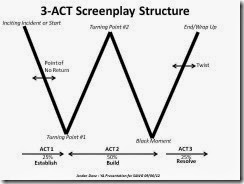Titles. We all need them for our books. I enjoy coming up with titles for my novels and stories but it can be a lot of work. Just like writing.
My first library cozy mystery was originally called Death Due. I changed it to Due Death, an attempted play on “due date,” but decided I didn’t like that and changed it back to Death Due as I worked on the first draft. Later, I realized that was too generic, and didn’t jazz me, so I brainstormed a new title.
Almost at once a play on Ira Levin’s A Kiss Before Dying sprang up in my mind: A Shush Before Dying. The novel was set in the eighties, when silence was still enforced at a public libraries. One of the shushers winds up dead.
The second title for book 2 in my library cozy mystery series came almost at once: Book Drop Dead. Sometimes coming up with a snappy title is a snap. However, most of the time for me there’s a lot of skull sweat involved.
Today’s Words of Wisdom tackles titles, giving advice and examples on coming up with ones that will help catch a reader’s interest. We have excerpts from PJ Parrish, Mark Alpert and Ruth Allen. As always, it’s well worth reading the full posts, which you can find linked from the bottom of the respective excerpt.

In twelve years of teaching workshops and doing critiques I’ve have seen maybe one title that I thought really captured the book’s tone. (It was our own Kathryn Lilly’s Dying To Be Thin.) So I know how hard this is. Here is my advice on titles, for what it’s worth:
- Capture your tone and genre. Go on Amazon and look up books similar to yours (cruise the genre bestseller lists). Words have inflection, mood and color. Choose them carefully.
- Grab the reader emotionally. Two titles that do it for me: The Unbearable Lightness of Beingand The Spy Who Came in from the Cold
- Don’t settle for clichés. Yes, it’s hard to come up with fresh permutations on old standby words (especially in genre fiction where we rely on “dark” “blood” “death” etc.) But you have to find words that are unique about your story and draw upon them. Here’s a great title that twists a cliché word: Something Wicked This Way Comes.
- Don’t use empty arcane words that you think sound cool. Examples of bad titles: The Cambistry Conspiracy. (about world trade) The Hedonic Dilemma(about psychology ethics). Penultimate to Die. (the second-to-the-last victim). Don’t worry…I made these up.
- Create an expectation about the story. You know why I love this title: A Heartbreaking Work of Staggering Genius? It makes me say, “Oh yeah, buddy? Show me!” and he does.
- Be brief and punchy. Okay, I know I just gave you a bunch of long titles I love but there is something wonderful about short titles and studies show most bestsellers have short titles: Gone Girl So doesTell No One, Lolita and Jaws (original title A Stillness in the Water).
- Make the title work on other levels. This is hard but worth the brain-sweat if you can do it. Consider what these titles come to mean once you get deep into the stories: Catch 22, Silence of the Lambs. But don’t get too clever. I love Louise Ure’s book Forcing Amaryllisand the title is brilliant because it is about a rape and murder. But do most understand that the title is from a gardening term about forcing a plant to bloom early? Not so sure.
- Make a list of key words that appear in your book. Is there something you can build on? For our book A Killing Rain, the title came when I heard a Florida farmer describe that drenching downpour that can kill off the tomato crop and we used it in the book. The title was there all the time and we didn’t see it at first.
- Search existing works — the Bible, poetry, Shakespeare. I found our title An Unquiet Gravein an 17th century English poem.
- Write 20 titles and let them sit for a week or so. Go back and read them and something will jump out. Find some beta-readers you can test with. Titles usually evoke visceral immediate responses. You will know immediately if they connect.
And last: Never get emotionally attached to a title. It’s the worst thing you can do because it probably will be changed. Or needs to be. Because your first title is usually, as T.S. Eliot said, a prosaic every-day thing. You can do better. It’s there. You just have to dig deep. Sweat out that great title that Eliot called the “ineffable, effable, effanineffable deep and inscrutable singular name.”
PJ Parrish—April 16, 2013
Choosing a title for your novel should be fun, right? So why is it often so frustrating?
I think it’s because there are so many requirements for a good title. It has to tell the reader, in a general way, what the book is about. It also has to convey the tone of the book — a light, amusing title for a lighthearted novel, a heavy, ominous title for a dark, creepy thriller. It can’t be too similar to titles of other recently published or very well-known books. And it shouldn’t carry the baggage of unwanted associations. Above all, it has to be catchy.
One could argue that novelists shouldn’t worry so much about titles. This is an area where the publisher has the final say, because the title is so important to the marketing of the book. The author can make suggestions, but the publisher has veto power. And I’ve learned that the best titles often come out of brainstorming sessions between the author and editor after the book is finished. But I can’t start a novel without giving it at least a working title. I can’t just call it a work-in-progress. Would you call one of your kids a work-in-progress? (Although that’s what children are, really.)
I’ve written four published novels, and each had a working title that was different from its ultimate title. When I started writing the first book I called it “The Theory of Everything” because it was about a dangerous secret theory developed by Albert Einstein to explain all the forces of Nature. (Einstein himself called it Einheitliche Feldtheorie, the unified field theory.) But that wasn’t such a great title for a thriller. It seemed better suited to a literary novel. (And, in fact, there are several literary novels titled “The Theory of Everything.”) So my editor and I put our heads together and came up with “Final Theory.” That seemed more compelling and yet still true to the subject of the book, because physicists believe that if they ever do discover a theory of everything, it will also be a final theory (because they will have nothing fundamental left to discover).
Mark Alpert—May 17, 2014
Meaning before details.
According to John Medina of the University of Washington, the human brain requires meaning before details. When listeners doesn’t understand the basic concept right at the beginning, they have a hard time processing the rest of the information.
Bottom line for writers: The title and the cover—image plus title—have to work as a unit to explain the hook or basic concept first. Wrong image and/or misfit title confuse the would-be buyer and you lose the sale. On-target image plus genre-relevant title and the reader/agent/editor will look closer.
Your cover indicates visually by color, design and image what the reader can expect inside—a puzzling mystery, a swoony romance, futuristic scifi, or scary horror—but the first words the prospective reader/agent/editor sees are the ones in the title.
Your title tells readers what to expect.
You’re unpublished but your title is awfully close to Nora Roberts’ newest or…ahem…a clone of James Patterson’s most recent? Come on. Get real. Please. For your own sake.
Your book is about a modest governess in 19th Century London who falls in love with the maddeningly handsome Prince who lives in the castle next door, but your title promises hotter-than-hot, through-the-roof sales like, oh, maybe, 50 Shades Of Grey? Really? 51 Shades of Grey is the best you can come up with? Seriously?
If you’re in a quandary about choosing a title for your book here are Anne’s 10 Tips for Choosing the Right Title for Your Book.
You can also research successful titles in your genre for inspiration. Whether your genre is romance or suspense, you will find that certain words recur. Just be aware that most publishing contracts give the publisher the right to change the title. Sometimes the author is pleased.
Other times? Not so much. (Don’t ask me how I know, but horror stories abound.)
If the title you’ve chosen for your book is your idea of the one and only, check your contract to make sure you have the last word on title. The reality, though, is that few author have this right and, if you’re just starting out, you won’t. Sorry about that, but it’s the reality.
If you’re self-pubbing, you control the decision about titles. And, if you think of a better title in the future, you can easily change a title later.
Ruth Allen—May 3, 2021
***
- Do you like coming up with titles? Is doing so easy or hard?
- How do you brainstorm your titles? Do you have any particular technique, like finding a famous quote as a starting point?
- Do you research titles of other books in your genre when you work on your own?







